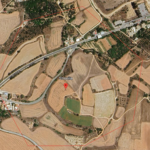After my first supervision meeting, I have reached a point where key decisions are shaping the trajectory of my research. While I initially leaned toward a traditional written dissertation, my engagement with archival material, community needs, and participatory methodologies has made me reconsider the possibility of a multimodal output. At this stage, I am keeping both options open. The research process remains the same, regardless of format. Both require a strong methodological framework, rigorous archival and field research, and a structured academic approach.
This decision is not just about format but about impact. So far, I have gathered a certain amount of archival material, including photographs, administrative documents, artifacts, and oral histories that are not readily available in academic sources. Given the depth and variety of these materials, I want my research output to be accessible and engaging for the very people this project is about. A purely written dissertation, while academically rigorous, may not reach or resonate with the community in the same way that an interactive and visually immersive format would. If I want my work to influence those connected to the village, it makes sense to consider a format that allows them to engage with their own history in ways that feel tangible and meaningful.
At the same time, my supervisor reminded me that the research process itself remains the same regardless. This means I can move forward with my research, conducting further literature review, refining my methodology, and structuring my fieldwork, without needing to make a final decision on format just yet. Instead, I aim to finalize this choice by the end of April, once I have a clearer sense of what archival materials I can access during my next visit to Cyprus in March–April. This visit will be instrumental in determining whether I can fully execute the multimodal vision or if a more traditional approach would be the best way forward.
With this flexibility in mind, my research questions remain cantered on how intangible cultural heritage is documented, preserved, and reimagined in contested spaces, with Strovilia as a case study. One of the themes that has become particularly significant is the relationship between memory and space, especially in relation to the village’s coffee shop and church, which once served as anchors of communal life. Even though these spaces have largely been lost to political fragmentation and depopulation, their cultural significance persists in memory. Through oral histories and participatory methodologies, I hope to examine how these spaces continue to shape identity and heritage, even when they are no longer blooming.
While I have a strong methodological foundation, there are still aspects that require further refinement, particularly my approach to memory mapping versus mind mapping as tools for reconstructing Strovilia’s heritage. I plan to integrate several key methodologies, including ethnographic interviews to capture oral histories, memory mapping to visualize the cultural and spatial evolution of Strovilia, and visual documentation through photography and archival research. Additionally, I will analyse policy frameworks such as those of the UK Sovereign Base Areas in Cyprus and contextualize heritage preservation efforts within contested spaces.
Ethical considerations remain a top priority, particularly given the participatory nature of my research. Conducting interviews and working with personal narratives requires careful attention to informed consent, data protection, and the ethical complexities of representing contested heritage spaces. My next immediate step is to finalize my ethical approval application, ensuring that I meet all necessary requirements before beginning fieldwork.
As I move forward, my focus will be on securing ethical approval, aligning my methodology with academic literature, and preparing for fieldwork. At the same time, I will continue evaluating whether a traditional approach is truly the best format for this project or if a multimodal structure that includes a written dissertation alongside visual and digital outputs would be more effective. Since both scenarios require the same foundational research process, I can remain open to both possibilities without delaying progress.
This stage of my research marks a transition from conceptualization to execution. The more I engage with community-cantered methodologies, the more I am drawn to the idea of a multimodal format. However, I will take the time to carefully evaluate how best to balance academic rigor, accessibility, and impact before making a final decision.
___________________________________________________________________________
C.C.


